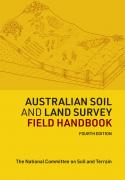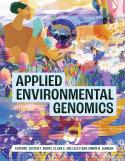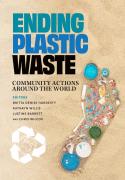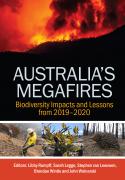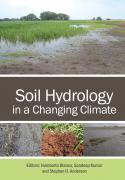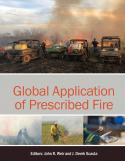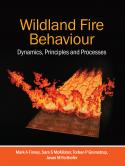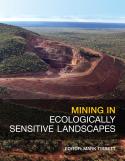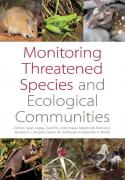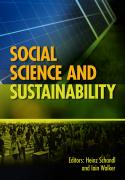Protecting the Future showcases tangible examples of the practical implementation of global sustainability and the triple bottom-line plus one (comprising environmental, social and cultural economic and governance dimensions) in the scholarship and operations of RMIT University. These practical initiatives, applications and methodologies can provide information and inspiration for individuals or organisations wanting to implement global sustainability principles in their planning and operations.
Global sustainability is one of the fastest growing concerns around the world. Organisations of all kinds are increasingly aware that their future may well depend on their ability to create solutions to economic, environmental, social and cultural as well as governance issues.
- —Page 1Abstract
Over a long weekend 45 students from across RMIT University in Melbourne leave the city for a four-day field trip into rural Victoria.
- —Page 15Abstract
Design is a kind of magic. It has always, somehow, had to take into account the issues of functionality and aesthetics and lots in between. Now it has an important new challenge: sustainability. An unusual project for environmental engineers was to design sustainable solutions for waste generated at the Queen Victoria Market in Melbourne and then communicate them by making a series of posters. In the 21st century, engineers not only need to make the sustainable solutions; we need to be able to explain them to all kinds of people.
- —Page 31Abstract
Young engineers might have to negotiate with governments in Africa, partner with NGOs in Australia, design for zero emissions in Europe, do a life cycle analysis of the impacts of new infrastructure for power sources and manage the team to make it happen.
Engineering has been a critical player in the Industrial Revolution and has always been a central part of teaching, learning and research at RMIT. In the 20th century, engineering had to look at its role anew. Sustainability – environmental, social and cultural, and economic – provides a conceptual key to examining how engineering might change. RMIT Engineering is up for the challenge. This story tells you where we are up to – facing the challenge of sustainability in the 21st century.
- —Page 53Abstract
This story is about how revolutions in the wool industry helped develop a different sort of regional campus. When the wool industry in the Western District of Victoria was under threat in the 1990s, the locals became creative, inviting RMIT’s international students to experience life in rural Australia.
The community saw the need to change. They began to understand some of the issues of sustainability. Were their land use practices environmentally sustainable? Were their lifestyles, businesses and country sustainable? Out of many discussions came the RMIT Hamilton campus – and these questions: what should it be that would be sustainable, and what kind of model might it provide for other places in rural Australia or rural anywhere?
- —Page 65Abstract
There are young people in inner-city Melbourne who are out of school, out of work, and homeless. It can be more than dangerous. The city is particularly popular with young people at a loose end because there are places to go to meet; there are movies, shops, clubs and drugs – lots of action. RMIT is part of that place and culture so perhaps it could help!
For our societies to be functional we need ways of sustaining our young people, to develop their interests and skills to be productive engaged citizens/societal helpers. This is part of the social and cultural dimension of the sustainability agenda, and part of RMIT’s responsibilities.
The Melbourne Youth Learning Opportunities Project was developed at RMIT and engaged many of these young people. But it struggles to be more than a pilot, and it too needs to be supported to be sustainable.
- —Page 77Abstract
In the middle of northern Victoria near Pyramid Hill there is a solar pond with rings on the surface. As you go deeper it gets warmer. Its heat is used for making locally produced salt into a commercial product. The experiment is a collaboration between RMIT’s Energy Conservation and Renewable Energy (Energy CARE) group with Pyramid Salt and Geo-Eng (now part of GHD) with support from the Commonwealth Government. It works using salinised land and solar. Now the challenge is: can it be fully commercialised?
- —Page 91Abstract
Fashion is with us every day in what we wear – what we love, hate, or aspire to wear. It’s almost impossible not to be ‘fashionable’ in the 21st century. But we give little thought to the genesis of our shoes, our handbags, and our designer jeans. What are they made of? Were they made by young girls in dingy factories in poor places, in country Victoria or in trendy inner-city suburbs?
Are the dyes poisoning the waterways? Were they made from carbon, contributing to the greenhouse effect? How did they get to each of us? What sort of transport did they use and how far? And where will they go when we are sick and tired of them – to charities, or to landfill?
The whole supply chain in the fashion states needs to be sustainable and workable. Is it affordable? Is it beautiful? Does it make us feel better? Does it inspire us?
- —Page 109Abstract
This chapter discusses the place memory and narrative hold as part of the whole process of an artist’s creativity. It draws upon current theory on memory and narrative research and refers to the author’s art works as the source of a discussion of the place of memory in the creation of a body of works titled ‘(Re)Focusing Landscapes’, an exhibition held in Washington DC in March 2001. The chapter describes how this personal creative journey led to the exposition ‘The Piece and the Practice’, which focused upon sustainability across diverse curriculum areas. Works of RMIT staff and students in that exposition were exhibited at Melbourne Central in November 2002.
- —Page 129Abstract
When Rachel Carson’s Silent Spring was first printed in 1962, the world was alerted to the toxicity of our air, water and land as the result of human activity. That book was instrumental in educating a whole generation about the unintended consequences of progress. It inspired others to explore connections between nature, natural cycles and human production. It asked hard questions about our capacity to understand and live within the bounds and systems of the planet.
Anitra Nelson’s deeply personal story of allergic illness highlights the issues Rachel Carson discussed in Silent Spring. Nature, including our bodies, cannot tolerate poisoned environments. We know this today as never before. Our futures, the planet’s future, depends on our continuing to investigate, understand and take action to clean up our act. It took 20 years to discover that mercury meant death to Anitra. When she found out what was wrong with her, it changed her outlook, her lifestyle and her work forever.
- —Page 137Abstract
Sustainability is not easy to grasp. It’s academic; it’s multidisciplinary; it’s complex. It has environmental, social and cultural, economic, and governance dimensions. Ideas about it as a concept and in practice are emerging in books, talks, the UN, and think tanks everywhere. It is not easy to explain, but we know it’s important.
We know we have to learn and teach and do differently. Dominique Hes takes us on her personal and professional journey from novice to expert to do just this. She learns and teaches and advises the building industry how to do things differently. Her goal is to help make the building industry green, sustainable, and innovative.
She takes us on this journey and sprinkles it with interesting methodologies and insights. Not only does she present us with a model to learn from and apply elsewhere, but she is honest and open about just how quirky, difficult, but professional such a journey can be.
- —Page 159Abstract
Establishing a campus in Ho Chi Minh City in Vietnam is high risk and hard, but David Wilmoth tells the tale with relish. He explains how ideas of sustainability and the triple bottom line were used from the outset to design, develop and evaluate what and how things might be done. Environmental issues are especially important because part of the university is to be built in a fragile place and energy use and other resources are to be efficient and inexpensive. Social and cultural issues are important because RMIT aims to work with local people, be fair to communities, and be relevant to students.
And of course the institution itself must be educationally and economic viable. These are core to the challenges of sustainability.
- —Page 177Abstract
RMIT was built in the 1880s as ‘Melbourne’s Working Men’s College’. So it has many 19th and 20th century buildings throughout Melbourne’s CBD. Taking on the task of greening those buildings is a challenge! Robyn Oswald-Jacobs tells how complicated the questions and solutions can be when RMIT’s Building 14 is due for refurbishment. Should we have a new chiller? What about natural ventilation? Can the rooms be renovated for innovative teaching where students love to learn? How can RMIT’s buildings be energy efficient, as part of one of the world’s most liveable cities?
- —Page 193Abstract
RMIT’s ‘Green Team’ were diligent, environmentally aware and able students. Young engineers, young scientists who couldn’t walk past a rubbish bin without an audit of its recyclable waste and contamination. Like students all around the world in the 1990s they were determined to green their campus. They used RMIT waste, water and energy issues for their academic projects. They volunteered and then some – became employed, dedicated to raising awareness with students, lecturers and RMIT’s operations managers to develop a Green Star Office Program, thinking globally acting locally.







